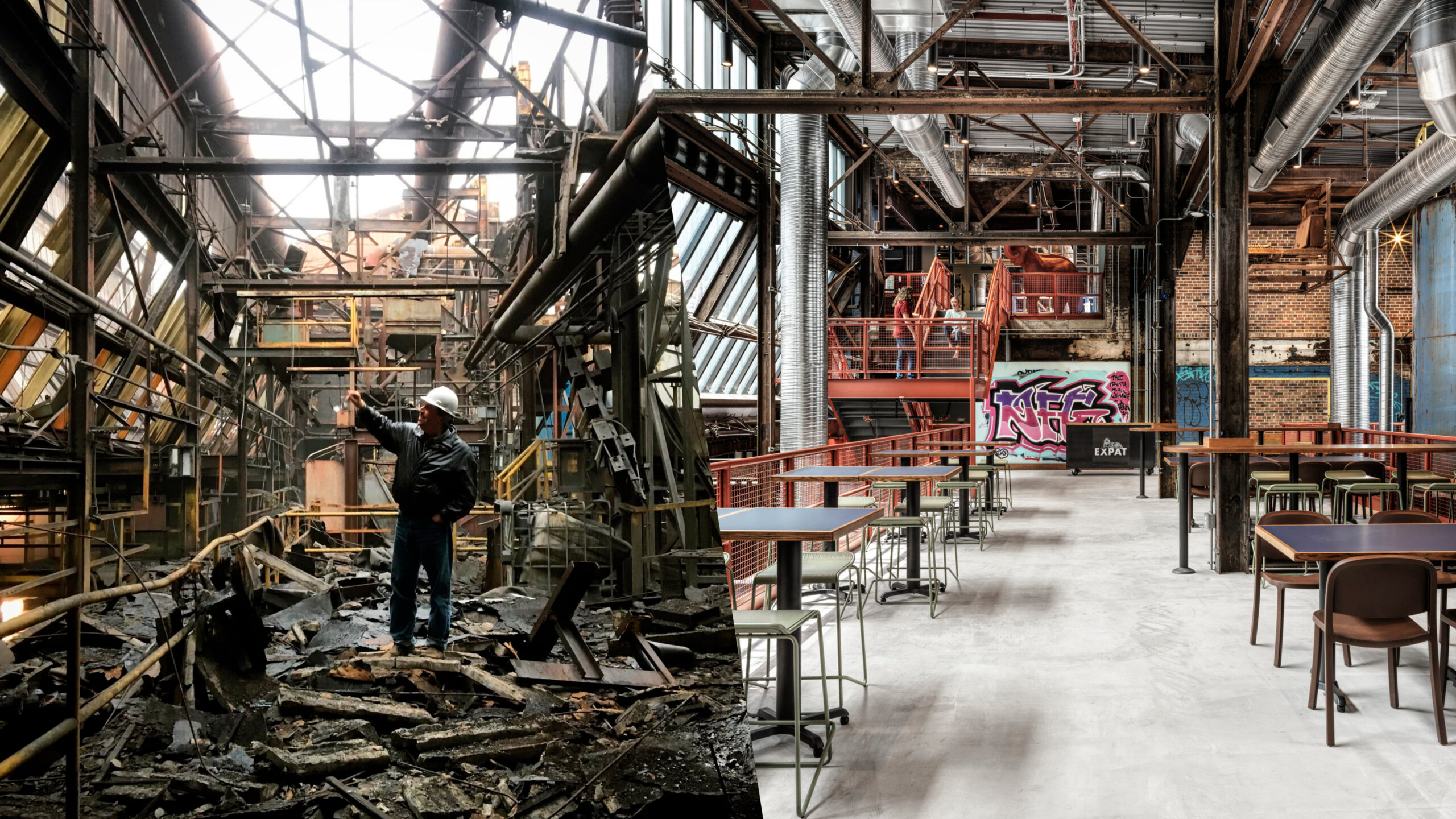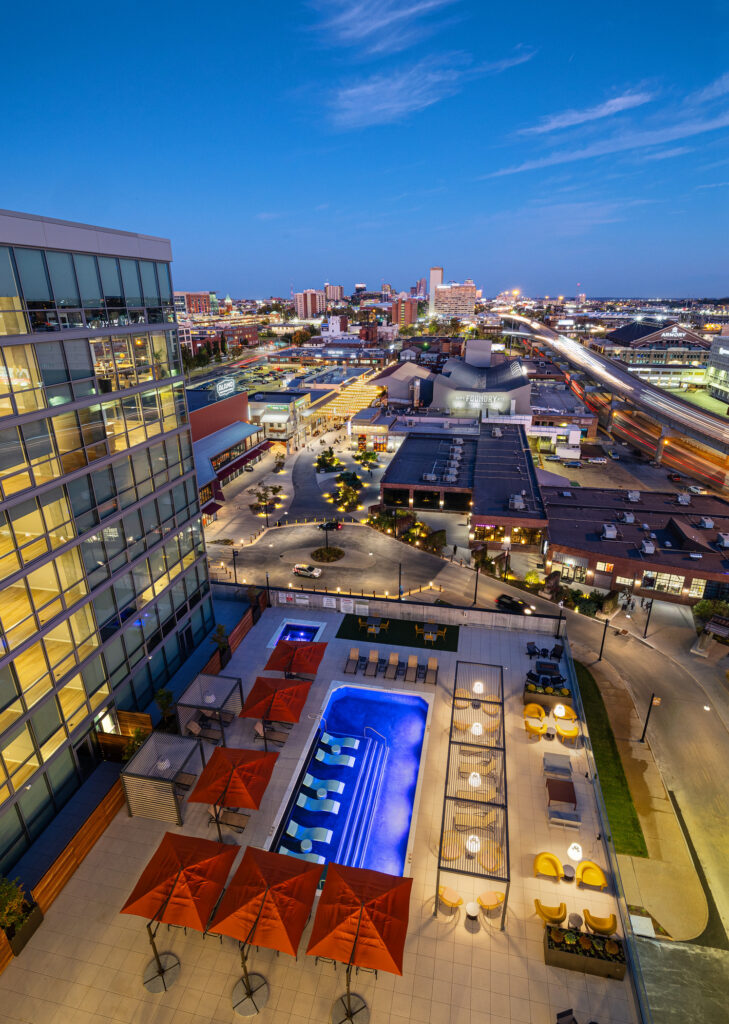The City Foundry St. Louis project is prominently located within the central corridor in the former Century Electric Foundry complex. The redevelopment will bring new life to the old foundry; a striking industrial building that features a butterfly monitor pond truss roof structure, giant sand hoppers, cupola melting furnaces, pipes, cranes, soaring factory spaces, massive divided-lite windows, mezzanines, catwalks and offices. Plans by previous owners called for the foundry’s demolition as recently as 2014, which would have forever severed St. Louis’s primary remaining connection to a homegrown and locally significant company, Century Electric.
Century Electric Co. was once one of the “big three” electrical manufacturers based in St. Louis along with Wagner and Emerson. Electrical manufacturing was a major industry in the local economy from the advent of electricity, and St. Louis was the site of early innovation in the field. In fact, Charles Heisler of St. Louis is credited with the first local use of commercial lighting, incorporating alternating current to operate arc lamps in Conrad’s Brewery in 1878 — a year prior to Thomas Edison’s famed demonstration of the incandescent lamp.
Century Electric carried on that local tradition of innovation by selling custom hand-built motors beginning in 1900, and they expanded rapidly from there, soon producing a variety of electric motors and generators sold internationally. Their motors ranged from the fractional horsepower type that power small appliances to those with enough horsepower to run entire factories. The company consistently pioneered new technologies to improve their products and were renowned for their high quality. Their most significant breakthrough was achieved in 1914, when they were the first manufacturer to engineer repulsion type motors in small sizes. Century’s innovations made the development of early household appliances possible, and, as a matter of fact, the first automatic electric home refrigerator was equipped with a Century Electric motor.
To facilitate ever increasing product orders, plans were drawn in the late 1920s for a dedicated foundry on a site purchased at Spring and Forest Park. The design was provided by Architect Louis Baylor Pendleton, better known for his role on the design team for the prominent 1951 addition to Third Baptist Church in nearby Grand Center. The foundry consolidated casting functions for the full catalog of Century products into one location and the first heat was poured on April 30, 1930. From there, Century Foundry became one of the largest job-shop operations in the Midwest, specializing in custom made parts produced to the constantly evolving specifications of Century products and equipment. The foundry facilitated getting increasing numbers of the latest Century products out to market quickly and at the high quality they were previously known for.
In the 1950s and 60s, Century Electric followed the industry trend of moving manufacturing to single storied factories in southern states. The foundry itself was the last Century Electric production facility to continue operating in St. Louis; fully functional well beyond Century’s consolidation by another company in 1972. The foundry continued operation under Gould Industrial, McGraw-Edison, Cooper Automotive and eventually Federal-Mogul Automotive who operated in the complex until 2007.
The foundry has been vacant for nearly a decade and has endured the effects of neglect, time, the elements, material scrappers and street artists. Although the physical remnants of these factors dominate the current appearance of the complex, the significant historical features are still intact. The industrial modern form of the foundry still dominates visually in its high-visibility location and remains informative of its own historic function as well as the once-industrial character of the surrounding area. The complex was recently added to the National Register of Historic Places for its significance to local Industry. It is fitting that this structure with a past so ingrained in St. Louis innovation will be reimagined to build on the area’s growing contemporary reputation as an innovation hub.

Left: Steve Smith, Founder & CEO of Lawrence Group, at City Foundry STL Phase 1. Right: City Foundry STL’s Expat BBQ mezzanine dining area, designed by Lawrence Group.

View from One Foundry Way pool deck overlooking City Foundry STL.
Lawrence Group, in partnership with developer New + Found, worked closely with local, civic and political leadership to restore the historic buildings on-site and ultimately produce an adaptable, innovative space for the St. Louis community – City Foundry STL. Standing in a 15-acre site, this 21st century mixed use development celebrates creative concepts in food, commerce and entrepreneurship. Envisioned as a community of innovation where ideas thrive, this unique platform offers innovative food concepts, retailers and workspaces.
The first phase of the development opened in 2021 and includes a food hall, creative office space, retail space and parking garage. Additional amenities consist of public plaza spaces, bike sharing, dedicated ridesharing drop-off and connection to the Great Rivers Greenway trail system. In 2024, Phase two of City Foundry district now includes One Foundry Way, a 14-story luxury apartment and the first market-rate, high-rise apartment in Midtown St. Louis in half a century. Phase Two will also include a mixed-use development consisting of a five-story mass timber frame build-to-suit office building.
The project has received local and national recognition, including making the Forbes OZ 20 Top Opportunity Zone Catalysts list, Building St. Louis Awards 2021, and finalist for AGC of Missouri Keystone Award 2024. A City Foundry STL tenant space designed by Lawrence Group, None of the Above Speakeasy, was winner of 2024 Sophisticated Living St. Louis SOPHI Award for Best Hospitality Interior or Architectural Design in the Hotel, Restaurant, or Club category.
This blog was originally posted by Christina Clagett while serving as a design professional at Lawrence Group in 2016. Last updated by Lawrence Group Team in January 2025.
